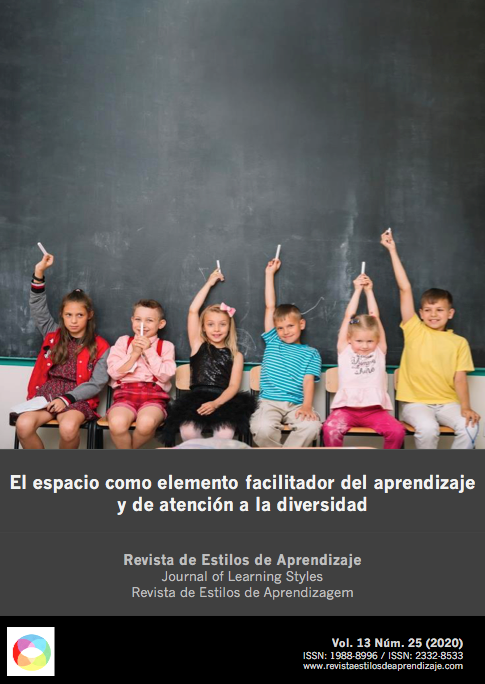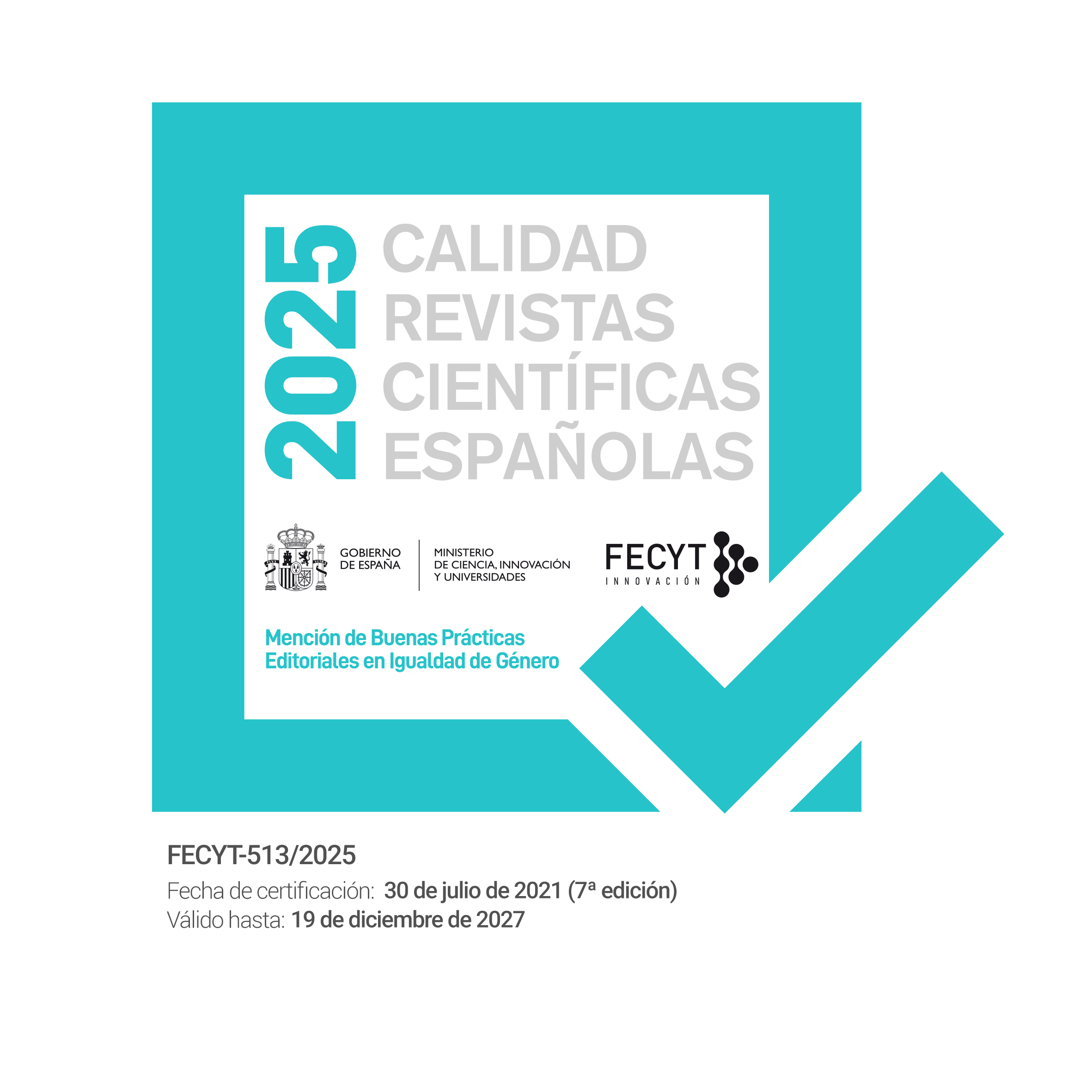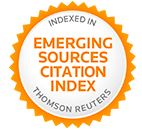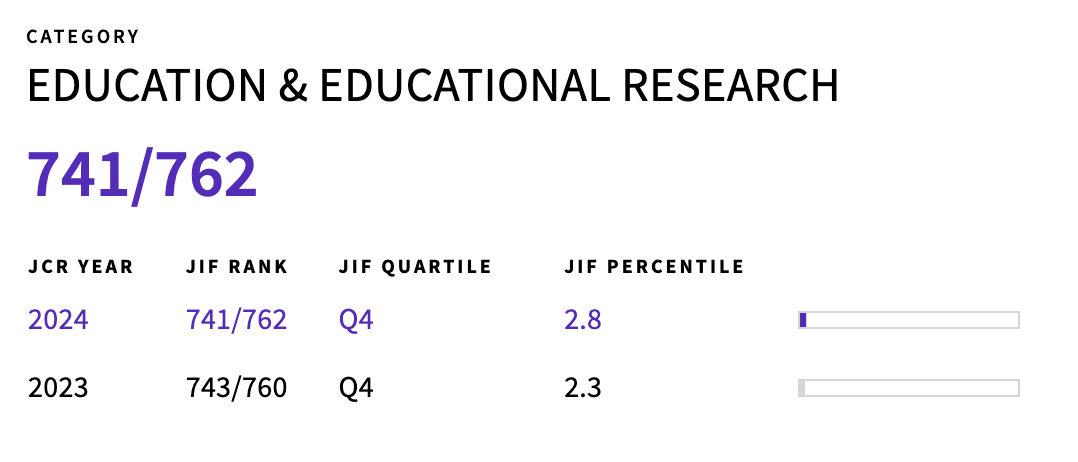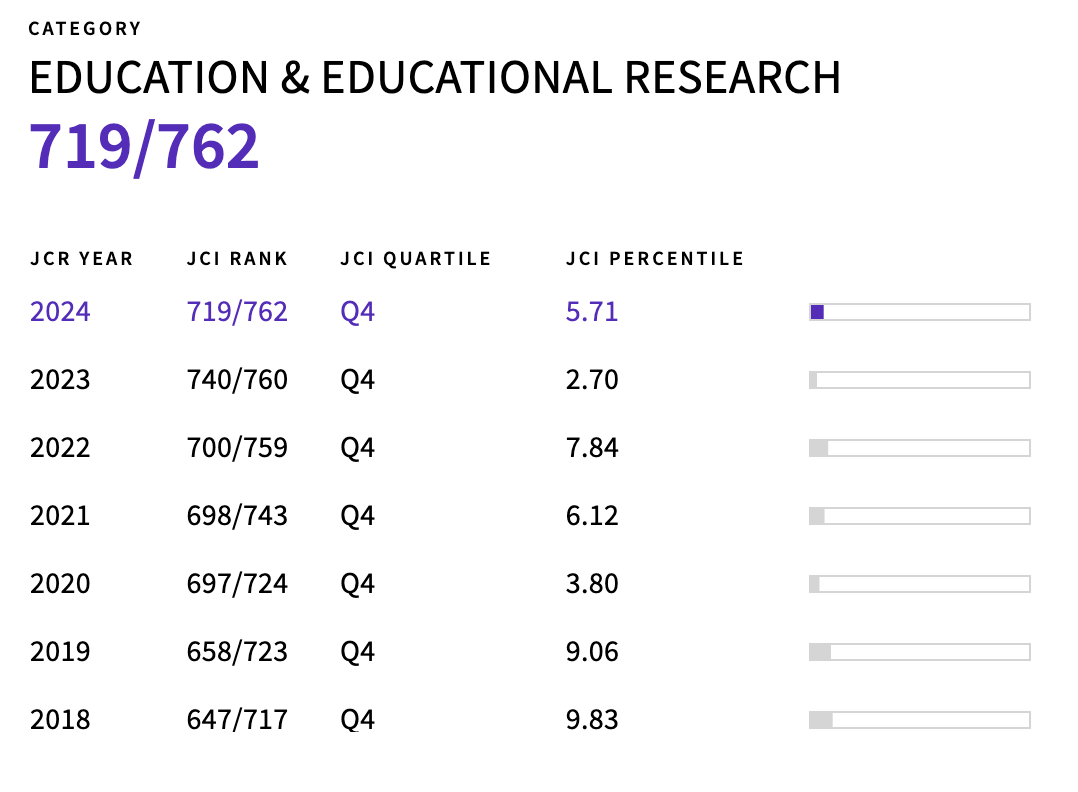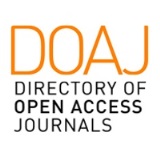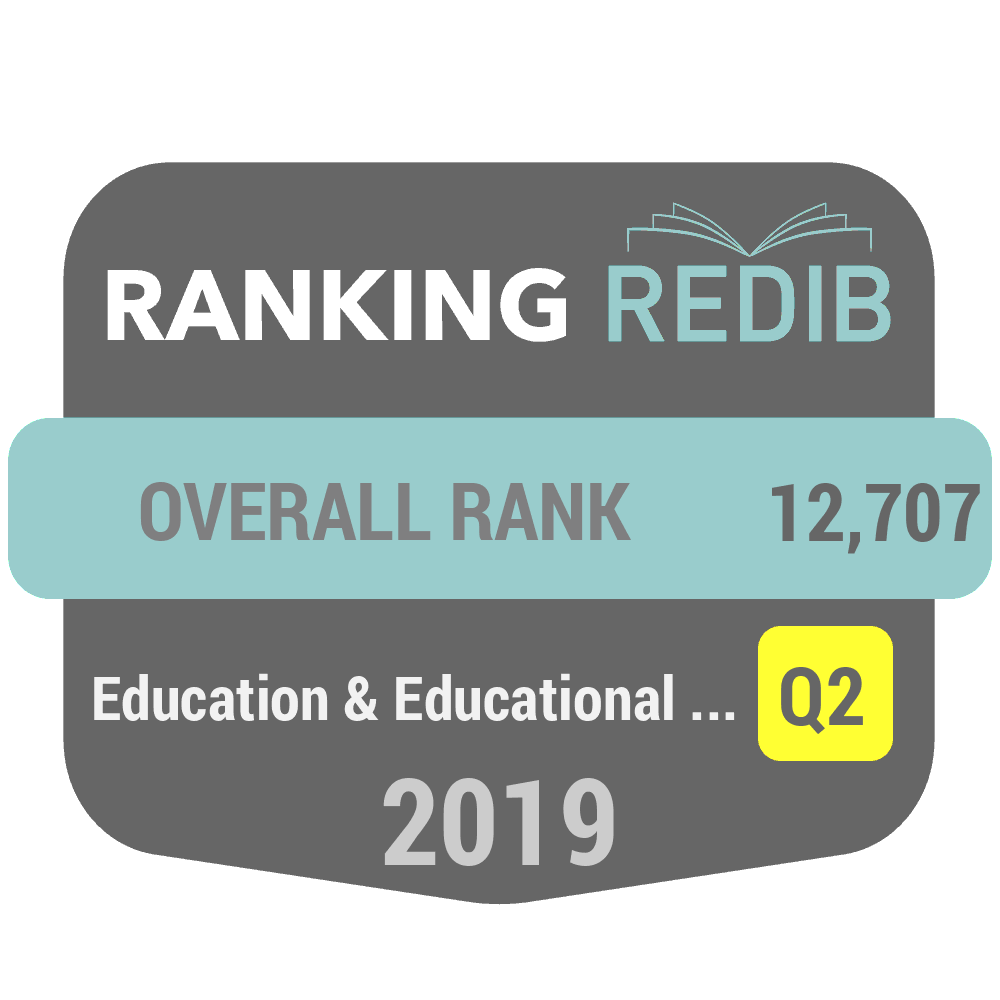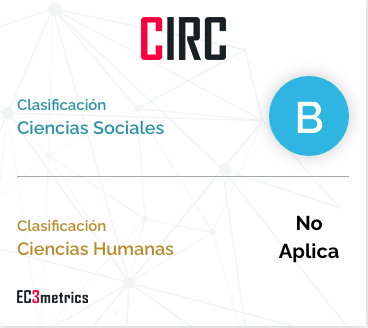SHINEⓇ: modelo para la transformación de espacios educativos
DOI:
https://doi.org/10.55777/rea.v13i25.1499Keywords:
espacios escolares, innovación educativa, evaluación, neuroarquitectura, cultura escolarAbstract
When undertaking reforms or transformations in an educational environment, Headmasters and Management Teams must make decisions that will lead to a significant economic investment, without previously having a clear evidence on the impact that this transformation will have on their stakeholders (students, families, teachers and non-teaching staff). The authors have used a methodology of documentary analysis, consulted databases of academic and scientific rigor and reviewed the existing literature of the last 24 years, in Spanish and English, on the impact of educational spaces on the people who use them and their behaviors. They thus offer a pentadimensional guide-model for the building or transformation of school spaces, SHINE®, a theoretically based model that holistically integrates those dimensions that help align this innovative spatial transformation with the Educational Project and the Organization Strategic Plan. The dimensions are Stimulation; Human Centered; Individualization; Naturalness and Environmentally Friendly. The results are discussed related to the need to promote these educational changes and their evaluation, in order to determine their personal, educational and social impact.
Downloads
References
Amann Vargas, B. (2016). Educación para el desarrollo sostenible (EDS) y arquitectura escolar. El espacio como reactivo del modelo pedagógico. Bordón, 68(1), 145-163.
Bakó-Biró, Z., Clements-Croome, D. J., Kochhar, N., Awbi, H. B., & Williams, M. J. (2012). Ventilation rates in schools and pupils’ performance. Building and Environment, 48, 215-223.
Bannister, D. (2017). Guidelines on Exploring and Adapting Learning Spaces in Schools. Brussels: European Schoolnet.
Barrett, P. y Barrett, L. (2010). The potential of positive places: Senses, brain and spaces. Intelligent Buildings International, 2(3), 218-228.
Barrett, P.S., y Zhang, Y. (2009). Optimal learning spaces: Design implications for primary schools. Manchester: University of Salford.
Barrett, P.S., Zhang, Y., Davies, F., y Barrett, L.C. (2015). Clever Classrooms. Summary report of the HEAD Project. Project Report. Salford: University of Salford. Recuperado de: http://usir.salford.ac.uk/35221/1/120515%20Clever%20Classrooms.pdf
Berman, M.G., Jonides, J. y Kaplan, S. (2008). The cognitive benefits of interacting with nature. Psychological science, 19(12), 1207-1212.
Blyth, A. y Velissaratou, J. (2018). OECD School User Survey: Improving Learning Spaces Together (pp. 1-44). Paris: OECD Publishing.
Bocconi, S., Kampylis, P.G. y Punie, Y. (2012). Innovating learning: Key elements for developing creative classrooms in Europe. Luxembourg: Publications Office of the European Union.
Burke, C. (2007) Inspiring spaces: creating creative classrooms. Curriculum Briefing, 5(2), 35-39.
Caballero-García, P.A. (2010). Propuestas de solución para los problemas educativos de hoy. Revista Electrónica Interuniversitaria de Formación de Profesorado, 13(4), 53-65.
Cao, B., Ouyang, Q., Zhu, Y., Huang, L., Hu, H. y Deng, G. (2012). Development of a multivariate regression model for overall satisfaction in public buildings based on field studies in Beijing and Shanghai. Building and environment, 47, 394-399.
Chen, P.C., Lai, Y.M., Wang, J.D., Yang, C.Y., Hwang, J.S., Kuo, H.W. y Chan, C.C. (1998). Adverse effect of air pollution on respiratory health of primary school children in Taiwan. Environmental health perspectives, 106(6), 331-335.
Cheryan, S., Ziegler, S.A., Plaut, V.C. y Meltzoff, A.N. (2014). Designing classrooms to maximize student achievement. Policy Insights from the Behavioral and Brain Sciences, 1(1), 4-12.
Crespo, J., y Priegue, D. (2015). La variable espacial y la escuela infantil inclusiva: apuntes para repensar los espacios escolares descritos en la normativa para los centros de segundo ciclo de educación Infantil. En M.J. Buceta y J.M. Crespo (Coords.), Actas del IV Congreso Internacional de Atención Temprana y Educación Familiar (pp. 175-188). Santiago de Compostela: Servicio de Publicaciones e Intercambio Científico.
Dewey, J. (1918). Las escuelas del mañana. Madrid: Librería de los sucesores de Hernando.
Eberhard, J.P. (2009). Applying neuroscience to architecture. Neuron, 62(6), 753-756.
Fanger, P.O. (1972). Thermal comfort, analysis and application in environmental engineering. New York: McGraw-Hill.
Fisher, K. (2005). Research in to identifying effective learning environments. Evaluating Quality in Educational Facilities. OECD/PEB. Recuperado de: www.oecd.org/edu/facilities/ evaluatingquality.
French, R., Imms, W. y Mahat, M. (2019). Case studies on the transition from traditional classrooms to innovative learning environments: Emerging strategies for success. Improving Schools, 18. Recuperado de https://doi.org/10.1177/1365480219894408
Gambatese, J.A., Rajendran, S., y Behm, M.G. (2007). Green Design & Construction Understanding the Effects On Construction Worker Safety And Health. Professional Safety, 52(05).
Garfield, L. (18 de marzo 2018). A new school in India will prioritise happiness instead of grades-take a look inside. Independent. Recuperado de: https://www.independent. co.uk/news/world/asia/chennai-india-riverbend-school-danish-kurani-education-creative-design-vivek-kiran-indira-reddy-a8261991.html
Leiringer, R. y Cardellino, P. (2011). Schools for the twenty-first century: School design and educational transformation. British Educational Research Journal, 37(6), 915-934.
López Chao, V.A. (2016). El impacto del diseño del espacio y otras variables socio-físicas en el proceso de enseñanza-aprendizaje. Tesis doctoral. Valladolid: Universidad de Valladolid.
Malaguzzi, L. (1975). La educación infantil en Reggio Emilia. Barcelona: Octaedro S.L.
Marchand, G.C., Nardi, N.M., Reynolds, D. y Pamoukov, S. (2014). The impact of the classroom built environment on student perceptions and learning. Journal of Environmental Psychology, 40, 187-197.
Mokhtar Noriega, F., Jiménez Rodríguez, M.A., Heppell, S. y Segovia Bonet, N. (2016). Creando espacios de aprendizaje con los alumnos para el tercer milenio. Bordón, 68(1), 61-82.
Montiel, I., Mayoral, A.M., Navarro Pedreño, J. y Maiques, S. (2019). Acoustic Comfort in Learning Spaces: Moving Towards Sustainable Development Goals. Sustainability, 11(13), 3573.
Morado, M.F, y Ocampo Hernández, S. (2019). Una experiencia de acompañamiento tecno-pedagógico para la construcción de Entornos Virtuales de Aprendizaje en educación superior. Revista Educación, 43(1), 43-61. Recuperado de: https://dx.doi.org/10.15517/revedu.v43i1.28457
Muñoz Rodríguez, J.M. y Olmos Migueláñez, S. (2016). Naturaleza social de la arquitectura y educación. Un estudio descriptivo. Bordón, 68(1), 99-114.
Organización de Naciones Unidas (2002). Decenio de las Naciones Unidas de la Educación para el Desarrollo Sostenible (20052014). Plan de aplicación internacional. Resolución nº 57/254 de la Asamblea General de las Naciones Unidas. Recuperado de: https://unesdoc.unesco.org/ark:/48223/pf0000148654_spa
Organización de Naciones Unidas (2015). Objetivos de desarrollo sostenible. Recuperado de: https://www.un.org/sustainabledevelopment/es/objetivos-de-desarrollo-sostenible/
Orlowski, R., Loe, D., Watson, N., Rowlands, E., Mansfield, K., Venning, B. y Palmer, J. (2003). Guidelines for Environmental Design in Schools (Revision of Design Note 17). Building Bulletin 87, 2nd Edition Version 1. Publications Centre, PO Box 276, London SW8 5DT, England, United Kingdom.
Romañá, T. (2016). Educación y arquitectura: un monográfico para un campo emergente. Bordón, 68(1), 27-39.
Sánchez Pozo, M.A. y Caballero-García, P.A. (2019). El espacio transdisciplinario, un espacio transformador de la realidad educativa. En S. Carrascal (Dir.) y M. Larragueta e I. Ceballos (Coord), Educación y transformación social y cultural (capítulo 24, pp. 395-419). Madrid: Editorial Universitas, S.A.
Sanoff, H. (2001). School Building Assessment Methods. Washington DC: National Clearinghouse for Educational Facilities. Office of Educational Research and Improvement (ED).
Saura Carulla, M., Muntañola Thornberg, J., Méndez Rodríguez, S. y Beltrán Borràs, J. (2016). De la educación del arquitecto a la arquitectura de la educación: un diálogo imprescindible. Bordón, 68(1), 165-180.
Sternberg, E.M. y Wilson, M.A. (2006). Neuroscience and architecture: seeking common ground. Cell, 127(2), 239-242.
Tanner, C.K. (2009). Effects of school design on student outcomes. Journal of Educational Administration, 47(3), 381-399.
Tanner, C.K. (2014). The Interface Among Educational Outcomes and School Environment. Educational Planning, 21(3), 19-28.
Ulrich, R.S. (1991). Effects of interior design on wellness: Theory and recent scientific research. Journal of Healthcare Interior Design, 3(1), 97-109.
Vegas, B. (2018). Nuevos diseños en espacios educativos vinculados a las nuevas metodologías docentes en educación primaria y secundaria. Trabajo Fin de Máster de Educación Secundaria. Madrid: Universidad Camilo José Cela.
Wargocki, P. y Wyon, D.P. (2007). The effects of moderately raised classroom temperatures and classroom ventilation rate on the performance of schoolwork by children (RP-1257). HVAC&R Research, 13(2), 193-220.
Woolner, P., Thomas, U. y Tiplady, L. (2018). Structural change from physical foundations: The role of the environment in enacting school change. Journal of Educational Change, 19(2), 223–242.
Downloads
Published
How to Cite
Issue
Section
License
By submitting the original, the author(s) declare that they are aware of and accept, in full, the privacy policy as well as the copyright of the Learning Styles Magazine.
The Learning Styles Magazine offers free and open access to its content, completely free of charge, in order to bring scientific research to its readers and society in general. All digital contents are free and open access and are published under a Creative Commons license:

Rights are granted under the Creative Commons Reconocimiento-NoComercial-SinObraDerivada 4.0 Internacional (CC-BY-NC-ND 4.0)
The Learning Styles Magazine is an open access journal. Publication of articles or reviews in the Journal does not entitle you to any remuneration. For authors as well as readers, the journal is free Creative Commons Reconocimiento-NoComercial-SinObraDerivada 4.0 Internacional (CC-BY-NC-ND 4.0).
With this licence, the reproduction and dissemination of the contents of the magazine for educational, social and knowledge transmission purposes is permitted, without any profit motive in mind, provided that the source and authorship are not modified. The licence granted to Learning Styles Magazine allows the copying and distribution of the magazine's contents, as long as the authorship of the work is recognised, correctly specifying the author and the publishing entity. The work may not be used for commercial purposes, nor may it be altered, transformed or generated from this work.
The publication of articles or reviews in the Journal does not give the right to any remuneration.
The Learning Styles Journal invites the author/authors to increase the visibility and scope of their articles published by re-disseminating them in:
- Web spaces and personal networks, as well as in scientific meetings and forums
- Open institutional archives in Universities, educational repositories and Research Centres.
- Academic and scientific networks (Researchgate, Academia.edu, Plubons, etc.)
All these spaces and publications must include all the bibliographic data of the publication.

